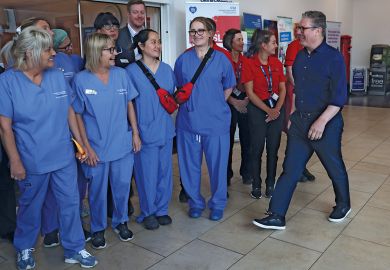This book is a retrospective appraisal of higher education in London, appropriately enough perhaps, given its aim to commemorate the work of the various bodies that culminated in the creation of London Guildhall University in 1992. It is a compilation, limited in scope to 11 chapters written by people associated with higher education institutions in London. There is no logical sequence and so topics tend to overlap and the authors at times assume prior knowledge on the part of the reader. There is no bibliography as such, although the chapters are scrupulously footnoted. There are no illustrations, even though there is no shortage of archive material. Some organisations are omitted from the narrative, such as the Bishopsgate Institute (founded in 1894) with its library, lunchtime concerts and growing range of educational activities, and others are under-played, such as Gresham College, which is returning to the levels of dynamic activity that it displayed in earlier times. And Jack the Ripper gets as many mentions in the index as the Inner London Education Authority.
Even so, the growing awareness of the needs of commerce and industry for a trained workforce, and the battle to meet the demands of a changing population, the role of philanthropists and people of vision combine to make this a story of endless fascination. The achievements of Toynbee and Hogg, of Fabians led by Sidney and Beatrice Webb and the City Parochial Foundation in setting up no fewer than ten polytechnics, all deserve recognition. As Bernard Shaw notes in Man and Superman, the names still resonate down the years: the People's Palace, the Regent Street Polytechnic, and those wonderful self-conscious titles from another age, like the Dissenting Academies, the Working Women's College, or the Greenwich Mutual Improvement Society. Yet the people mentioned tend to be well known already to educational history. The people who flocked to the new foundations and the London County Council evening classes remain an anonymous mass, as do those unsung heroes of this particular epic - the ones who became teachers and spent their lives working in difficult conditions, often insecure and poorly paid.
Educational bodies, such as the City and Guilds, are well represented, even though there is some confusion between the Royal Society and the Royal Society of Arts. The Council for National Academic Awards is mentioned in several contexts, but the years of patient work in developing degree courses in the polytechnics do not receive the acknowledgement they merit, and the Colleges of Advanced Technology are only really mentioned in passing.
The interwoven fortunes of different London institutions do appear clearly. It is worth pondering the completely different paths that the whole structure of higher education could have taken if, for example, Birkbeck, City of London college and the Northampton Institute come together as the City Polytechnic, as was possible until 1907. The fate of the three London CATs is also worth contemplating: Battersea moved out to a greenfield site at Guildford in the 1960s to become Surrey University; the Northampton Institute became the City University, switching emphasis from engineering to a wider range of high-level professional courses; while Chelsea, which opted to become a College of London University, merged in the 1980s with King's.
It is a pity that there was not a twelfth chapter, projecting forward the lessons to be drawn from the attempts by organisations ranging from the livery companies to the LCC to create a system of post-school education appropriate for the needs of a changing population and a growing city.
That nobody succeeded in stopping or taming the almost organic growth of higher education is a lesson to be heeded by a future London-wide mayor, as is the need to provide the workforce with access to training in new skills and the importance of higher education to the economy of London as a whole.
Tim Connell is director of language studies, City University.
London Higher: The Establishment of Higher Education in London
Editor - Roderick Floud and Sean Glynn
ISBN - 0 485 11524 7
Publisher - Athlone
Price - £45.00
Pages - 324
Register to continue
Why register?
- Registration is free and only takes a moment
- Once registered, you can read 3 articles a month
- Sign up for our newsletter
Subscribe
Or subscribe for unlimited access to:
- Unlimited access to news, views, insights & reviews
- Digital editions
- Digital access to THE’s university and college rankings analysis
Already registered or a current subscriber?



